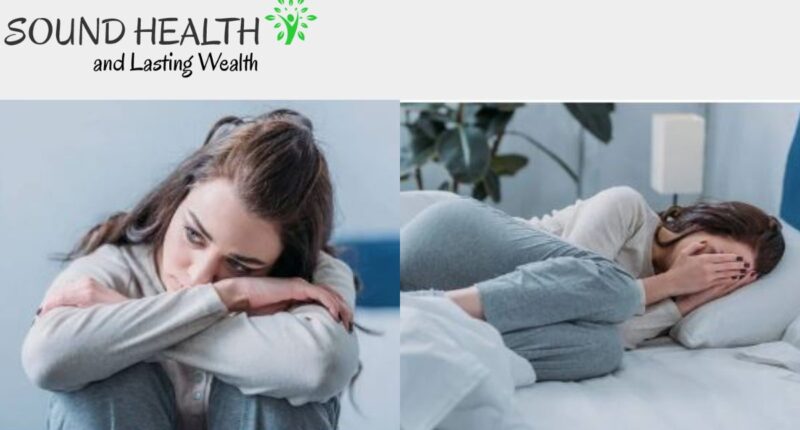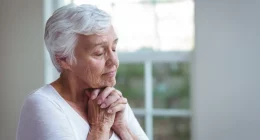Colors That Help with Anxiety and Depression: The Best Of All – Living with anxiety and depression can be challenging, but incorporating certain colors into our surroundings can provide a soothing and uplifting atmosphere. Colors have the power to influence our emotions, and by understanding their psychological impact, we can harness their benefits to alleviate anxiety and depression symptoms.
The Psychology of Colors – The Influence of Colors on Emotions
Colors have the ability to evoke specific emotions and affect our moods. Different hues and shades can create various psychological responses, ranging from tranquility and relaxation to excitement and happiness. By utilizing this knowledge, we can strategically select colors that promote emotional well-being.
Understanding Anxiety and Depression
Before delving into the colors that can help with anxiety and depression, it is essential to have a basic understanding of these conditions. Anxiety is characterized by excessive worry and fear, while depression involves persistent feelings of sadness and low mood. Both conditions can significantly impact one’s quality of life and require appropriate treatment. Now let’s look at colors that help with anxiety and depression.
1. Soothing Blue
Calming Colors – Blue is often associated with serenity and calmness. It has a tranquilizing effect on the mind and body, making it an excellent color choice for reducing anxiety and promoting relaxation. Lighter shades of blue, such as sky blue or baby blue, can create a peaceful ambiance in bedrooms, living rooms, or meditation spaces.
2. Serene Green
One study found that green colour is favorable to reducing depression.
Green is the color of nature and is considered an emotionally calming color with rejuvenating qualities. It is often associated with growth, harmony, and balance. Incorporating shades of green, such as sage green or mint green, into your environment can help reduce anxiety and create a sense of tranquility. Adding potted plants or creating a small indoor garden can further enhance the calming effect of green.
3. Tranquil Purple
Purple is a color that represents spirituality and introspection. It combines the calming qualities of blue with the introspective nature of red. Lavender or lilac shades of purple can create a serene and peaceful atmosphere, promoting relaxation and easing anxiety. Consider incorporating purple elements, such as throw pillows or artwork, into your living space to experience its soothing benefits.
4. Vibrant Yellow
Uplifting Colors – Yellow is often associated with energy, happiness, and optimism. It has the power to uplift mood and evoke feelings of joy and positivity. Incorporating yellow accents, such as decorative pieces or accent walls, can add vibrancy to your surroundings and help combat depression. However, it’s important to use yellow in moderation as excessive exposure to bright yellows may have an overstimulating effect.
5. Joyful Orange
Orange is a warm and energetic color that can evoke feelings of enthusiasm and vitality. It stimulates creativity and promotes a sense of motivation. Incorporating orange elements, such as cushions or artwork, can add a burst of energy to your space and uplift your mood. However, like yellow, it’s best to use orange as an accent color rather than overwhelming the entire environment.
6. Energetic Red
Red is a bold and powerful color that can evoke strong emotions. It is associated with passion, strength, and vitality. While red may not be suitable for large areas, incorporating it strategically in smaller doses can stimulate energy levels and create a sense of excitement. Consider using red as an accent color through accessories or artwork to boost motivation and combat feelings of lethargy. Continue reading to know the colors that help with anxiety and depression and next read Best bedding color for sleep: everything to know
7. Earthy Neutrals
Earthy neutral tones, such as beige, taupe, or soft brown, can create a sense of grounding and stability. These colors provide a calming effect while maintaining a warm and inviting atmosphere. Incorporating earthy neutrals into your living space can promote a sense of balance and soothe anxiety and depression symptoms.
8. Calming Pastels
Pastel colors, such as pale pink, light blue, or soft lavender, have a gentle and soothing effect on the mind and body. They can create a serene and tranquil ambiance, making them ideal for bedrooms or spaces dedicated to relaxation. Using pastel-colored bedding, curtains, or wall paint can help create a peaceful environment that promotes emotional well-being.
9. Harmonious Combinations
Combining different colors thoughtfully can create a harmonious and balanced environment. For instance, pairing calming blue with uplifting yellow can strike a balance between relaxation and energy. Similarly, blending serene green with tranquil purple can create a calming yet introspective atmosphere. Experiment with different color combinations that resonate with you to find the perfect balance for your space.
More Things That Help with Anxiety and Depression
Creating a Colorful Environment
Home Décor — When incorporating colors into your home, consider using them in various aspects of your decor. Choose paint colors, furniture, and accessories that align with the emotional atmosphere you want to create. Be mindful of the colors you select for different rooms, taking into account their intended purpose and the emotions you wish to evoke. For instance, soothing blues and greens can work well in bedrooms and relaxation spaces, while vibrant yellows and oranges can add energy to social areas like the living room or kitchen.
Workplace Considerations — Colors can also play a significant role in the workplace, where anxiety and stress may be prevalent. Incorporating calming colors in office spaces can promote a more peaceful and productive atmosphere. Consider using shades of blue, green, or neutral tones in your workspace. You can add these colors through wall paint, office furniture, or decor elements like plants or artwork. Creating a visually appealing and soothing environment can positively impact your mental well-being during work hours.
Personal Style — Colors can also be incorporated into your personal style to uplift your mood and combat anxiety and depression. When choosing clothing, opt for shades that make you feel comfortable and confident. Experiment with different colors and observe how they make you feel. For example, wearing a bright yellow shirt or a pastel-colored dress can infuse a sense of joy and positivity into your day. Incorporating colorful accessories, such as scarves, ties, or jewelry, can also add a pop of color to your outfits and enhance your overall mood.
Mindful Practices
Meditation and Visualization — In addition to incorporating colors into your environment, engaging in mindful practices can further support anxiety and depression management. Meditation and visualization techniques can help calm the mind and reduce stress. During meditation, visualize colors that promote relaxation or positivity. Imagine yourself surrounded by a calming blue or basked in the warm glow of uplifting yellow. By incorporating color visualization into your mindfulness routine, you can enhance its therapeutic effects.
Art Therapy and Coloring — Engaging in art therapy or coloring activities can be a creative and soothing way to alleviate anxiety and depression. Coloring intricate patterns or engaging in artistic expression can help shift focus away from negative thoughts and promote a sense of relaxation. Choose coloring books or art projects that incorporate a variety of colors to stimulate different emotions. Allow yourself to immerse in the process, using colors that resonate with your current emotional state.
Nature Immersion — Spending time in nature has been shown to have a positive impact on mental health. Surrounding yourself with the natural colors of the outdoors can provide a sense of calm and tranquility. Take walks in green spaces, spend time near bodies of water, or enjoy the vibrant colors of blooming flowers in gardens. Nature’s palette of greens, blues, and earthy tones can help alleviate anxiety and depression symptoms while fostering a deeper connection with the natural world.
Also read | Best Color Light To Sleep With – Red, Blue, Green Or Yellow?
Conclusion
Colors have a remarkable influence on our emotions and can play a significant role in managing anxiety and depression. By incorporating calming colors like blue, green, and purple, as well as uplifting colors like yellow and orange, into our environment, we can create a soothing and positive atmosphere that supports our emotional well-being. Additionally, practicing mindfulness and engaging in activities like art therapy and spending time in nature can further enhance the benefits of color therapy. Remember to be mindful of personal preferences and experiment with colors that resonate with you, as everyone’s emotional response to colors may vary.








